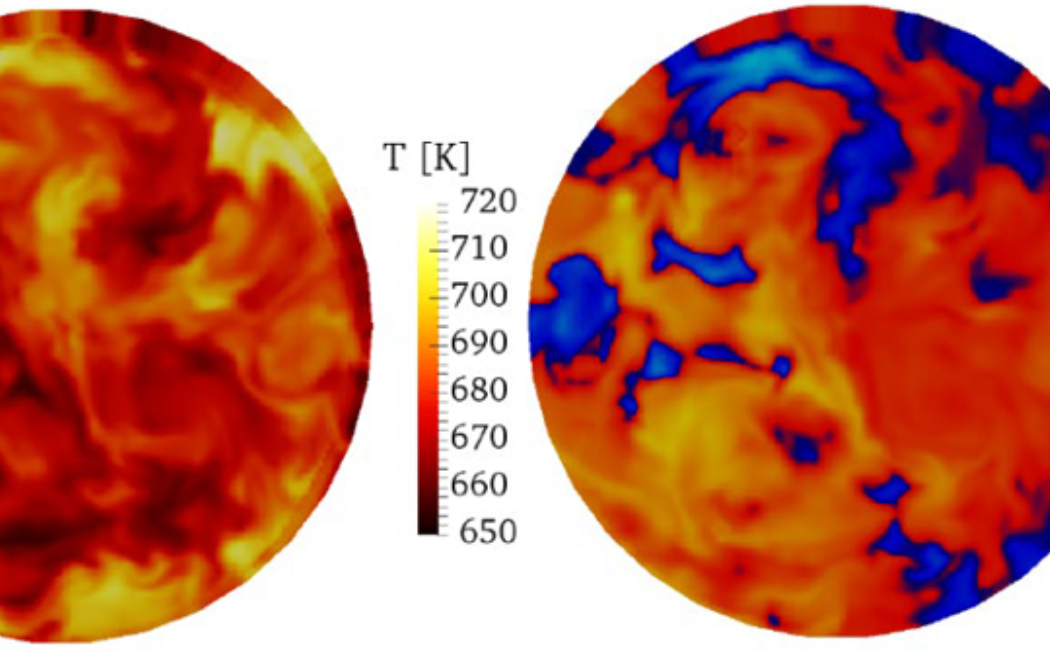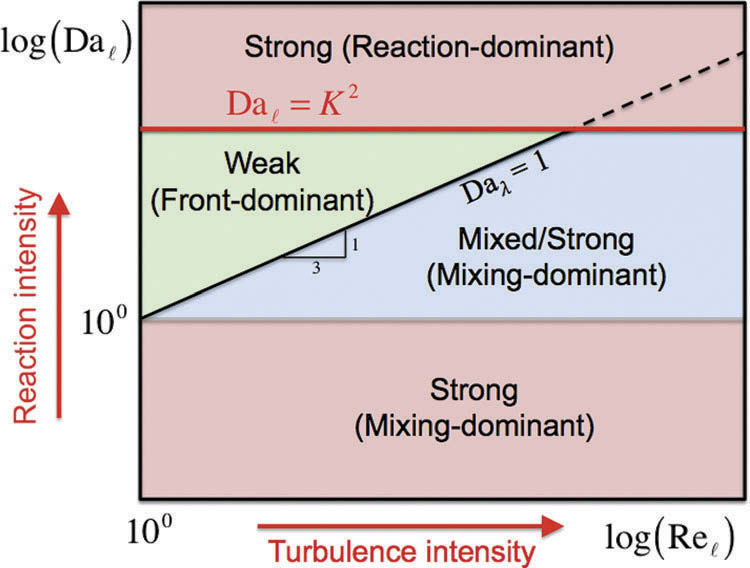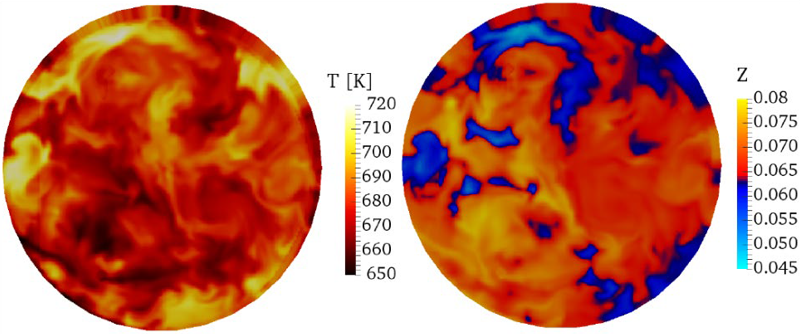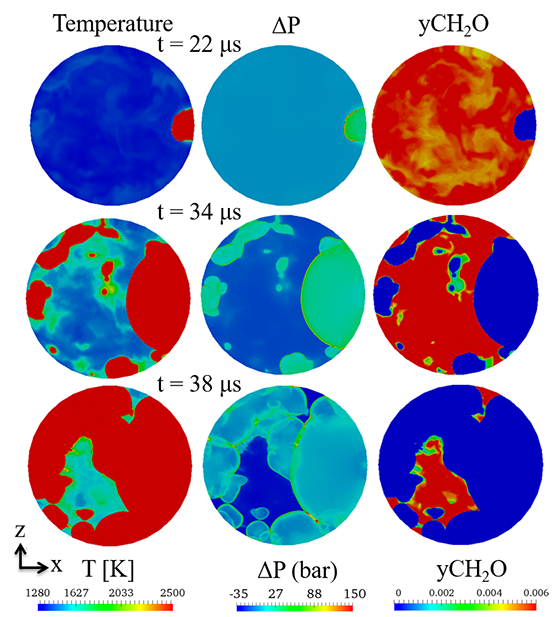


Pre-ignition is an undesired phenomenon that has been observed in different devices such as advanced downsized-boosted internal combustion engines (ICE), shock tubes, and rapid combustion machines (RCM). In these devices, pre-ignition is typically initiated by uncontrolled ignition sources such as hot spots and oil droplets. Pre-ignition may lead to the development of knock and super-knock exhibiting high-pressure peaks and oscillations, which may damage the engine.
A reliable theory to predict such abnormal combustion phenomena is of critical importance. A theoretical framework has been proposed to predict the knock, super-knock, and autoignition behavior of a reactant mixture for a given initial bulk mixture condition.
Many bulk-mixture conditions are investigated by RANS/LES/DNS. The resulting data are analyzed to identify the root cause of pre-ignition and super-knock. The predictive accuracy of the ignition regime criterion of the refined theory is validated
by the experimental and computational results with a satisfactory agreement.
The ignition regime criterion proposed by Prof. Im and coworkers is based on the Zel’dovich-Sankaran criterion, which is a ratio of the laminar flame speed to the spontaneous ignition front speed. The ignition regime criterion has been extended to account for the effect of turbulence, temperature and concentration fluctuations. A newly-developed criterion is also proposed to accurately identify different combustion modes, and quantitatively determine the combustion intensity.
Weak ignition is reproduced by DNS
Strong ignition is reproduced by DNS

The ignition regime diagram by Prof. Im et al. 2015

Representative initial conditions of temperature and mixture inhomogeneities from LES study

Representative shock-wave development in SI engine captured by RANS

The regions that contribute to the shock-wave development are identified by the theory